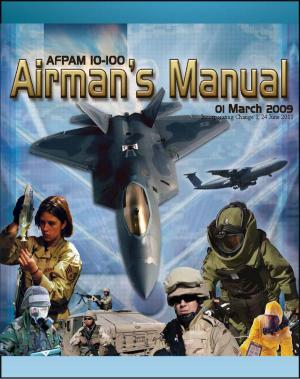21st Century Peacekeeping and Stability Operations Institute (PKSOI) Papers - Finding the Balance: U.S. Military and Future Operations, Quadrennial Review, Petraeus, Dempsey, Mattis
Nonfiction, History, Military, United States| Author: | Progressive Management | ISBN: | 9781310445460 |
| Publisher: | Progressive Management | Publication: | November 25, 2013 |
| Imprint: | Smashwords Edition | Language: | English |
| Author: | Progressive Management |
| ISBN: | 9781310445460 |
| Publisher: | Progressive Management |
| Publication: | November 25, 2013 |
| Imprint: | Smashwords Edition |
| Language: | English |
This monograph examines the U.S. Military's struggle to find the correct balance between conventional and counterinsurgency/stability approaches. The author uses history to remind us that at the end of wars, Armies often "throw the baby out with the bathwater" and revert to a default position for organization and doctrine instead of inculcating those lessons learned in the recent wars. History shows us that we do not maintain capabilities and capacity to conduct operations in complex environments.
Topics covered include: The Changemakers; General David Petraeus, Admiral Mike Mullen, General Martin Dempsey, General James Mattis, and the DOD Quadrennial Review.
Professor Flavin uses Frank Hoffman's four schools of thought (counterinsurgents, traditionalists, utility infielders and division of labor) and shows where the U.S. has been and may be headed in the future. The counterinsurgents believe that the irregular adversary that we fight today is the face of conflict for the foreseeable future; therefore, the military must not repeat the mistakes of the post-Vietnam era. Instead, they believe that we must fully incorporate counterinsurgency (COIN) into doctrine and make the appropriate adjustments in education, training, force structure and resources while accepting risk in a conventional warfighting focus. The traditionalists believe the most dangerous threat to the U.S. is a peer competitor that presents a conventional military threat; thus, the U.S. must retain its advantage in traditional military capabilities and focus to insure that the U.S. can "fight and win" and survive as a nation. To the traditionalists, the challenges presented by stability and COIN- type missions are lesser included cases that can be handled by a conventionally trained and structured force. The utility infielders look for a balance between the counterinsurgents and the traditionalist to cover the entire spectrum while managing risk. The key tenant of this school of thought is to satisfy everyone's diverse needs with limited resources. Lastly, the division-of -labor advocates argue that the traditionalist and counterinsurgent are such distinctly different modes of conflict that utility infielders cannot be prepared to meet these tasks and thus different forces are required. This would include ground forces, as well as Air and Maritime.
He looks at the change makers in DoD, men such as Secretary Robert Gates, Generals Dempsey, Mat-tis, Chiarelli, Caldwell, McMaster, and Admiral Mike Mullen - all deeply affected by the complex operations the U.S. military has been engaged with in the past seventeen years. They understand that there must be a change in mind-set, an evolution of thought, to succeed in current and future conflicts. It is through their leadership that the Department of Defense has created policy, doctrine, training and education that is influenced by the current fight but also rooted in history. Policy and doctrinal documents require that the whole of government be prepared to address full spectrum operations. Doctrinal publications such as FM 3-07, Stability Operations and JP 3-24, Counterinsurgency heralded a series of publications that assist organizations engaged in complex and challenging environments. Joint and allied doctrine has followed. Actions plans and training and education are following suit. After many years of conducting complex operations, shortfalls still exist. Part of the challenge in addressing education and training at all levels is the lack of adequate personnel in the training base to take the doctrinal concepts and convert them into guidance. Another challenge is the lack of capacity in the other government agencies to support a whole of government educational effort.
This monograph examines the U.S. Military's struggle to find the correct balance between conventional and counterinsurgency/stability approaches. The author uses history to remind us that at the end of wars, Armies often "throw the baby out with the bathwater" and revert to a default position for organization and doctrine instead of inculcating those lessons learned in the recent wars. History shows us that we do not maintain capabilities and capacity to conduct operations in complex environments.
Topics covered include: The Changemakers; General David Petraeus, Admiral Mike Mullen, General Martin Dempsey, General James Mattis, and the DOD Quadrennial Review.
Professor Flavin uses Frank Hoffman's four schools of thought (counterinsurgents, traditionalists, utility infielders and division of labor) and shows where the U.S. has been and may be headed in the future. The counterinsurgents believe that the irregular adversary that we fight today is the face of conflict for the foreseeable future; therefore, the military must not repeat the mistakes of the post-Vietnam era. Instead, they believe that we must fully incorporate counterinsurgency (COIN) into doctrine and make the appropriate adjustments in education, training, force structure and resources while accepting risk in a conventional warfighting focus. The traditionalists believe the most dangerous threat to the U.S. is a peer competitor that presents a conventional military threat; thus, the U.S. must retain its advantage in traditional military capabilities and focus to insure that the U.S. can "fight and win" and survive as a nation. To the traditionalists, the challenges presented by stability and COIN- type missions are lesser included cases that can be handled by a conventionally trained and structured force. The utility infielders look for a balance between the counterinsurgents and the traditionalist to cover the entire spectrum while managing risk. The key tenant of this school of thought is to satisfy everyone's diverse needs with limited resources. Lastly, the division-of -labor advocates argue that the traditionalist and counterinsurgent are such distinctly different modes of conflict that utility infielders cannot be prepared to meet these tasks and thus different forces are required. This would include ground forces, as well as Air and Maritime.
He looks at the change makers in DoD, men such as Secretary Robert Gates, Generals Dempsey, Mat-tis, Chiarelli, Caldwell, McMaster, and Admiral Mike Mullen - all deeply affected by the complex operations the U.S. military has been engaged with in the past seventeen years. They understand that there must be a change in mind-set, an evolution of thought, to succeed in current and future conflicts. It is through their leadership that the Department of Defense has created policy, doctrine, training and education that is influenced by the current fight but also rooted in history. Policy and doctrinal documents require that the whole of government be prepared to address full spectrum operations. Doctrinal publications such as FM 3-07, Stability Operations and JP 3-24, Counterinsurgency heralded a series of publications that assist organizations engaged in complex and challenging environments. Joint and allied doctrine has followed. Actions plans and training and education are following suit. After many years of conducting complex operations, shortfalls still exist. Part of the challenge in addressing education and training at all levels is the lack of adequate personnel in the training base to take the doctrinal concepts and convert them into guidance. Another challenge is the lack of capacity in the other government agencies to support a whole of government educational effort.















